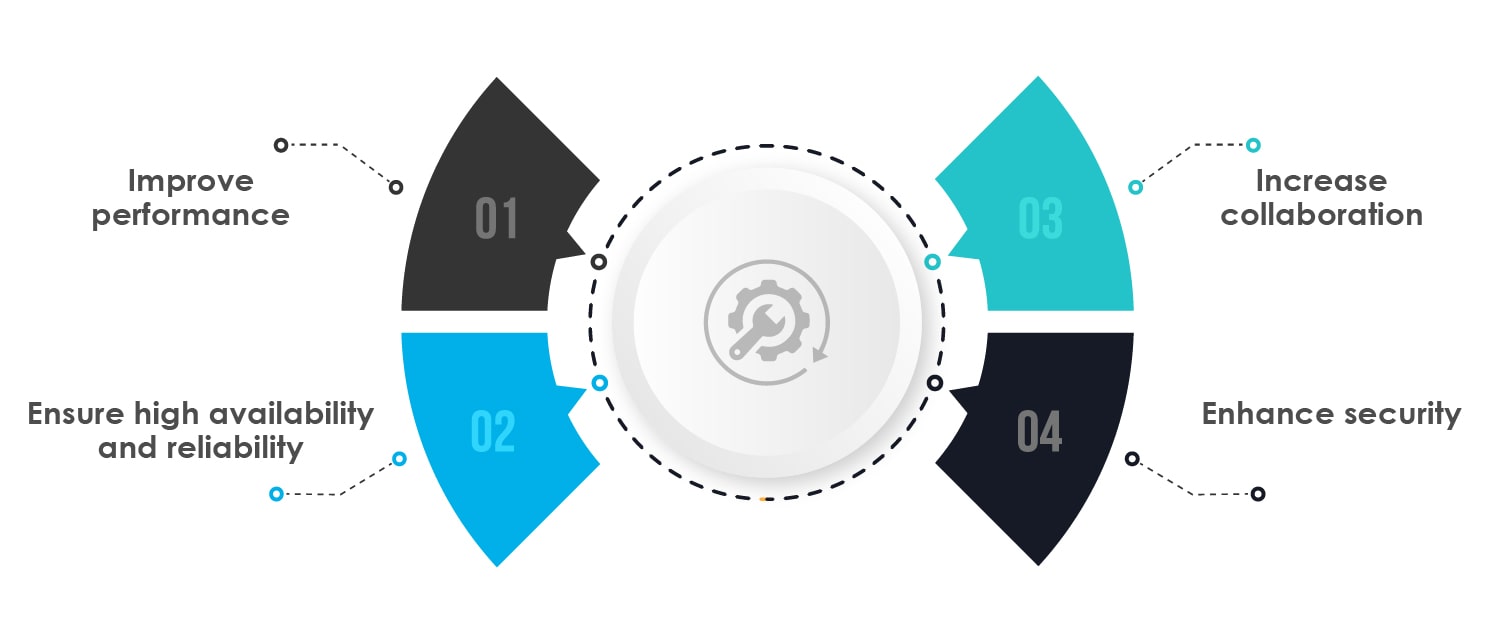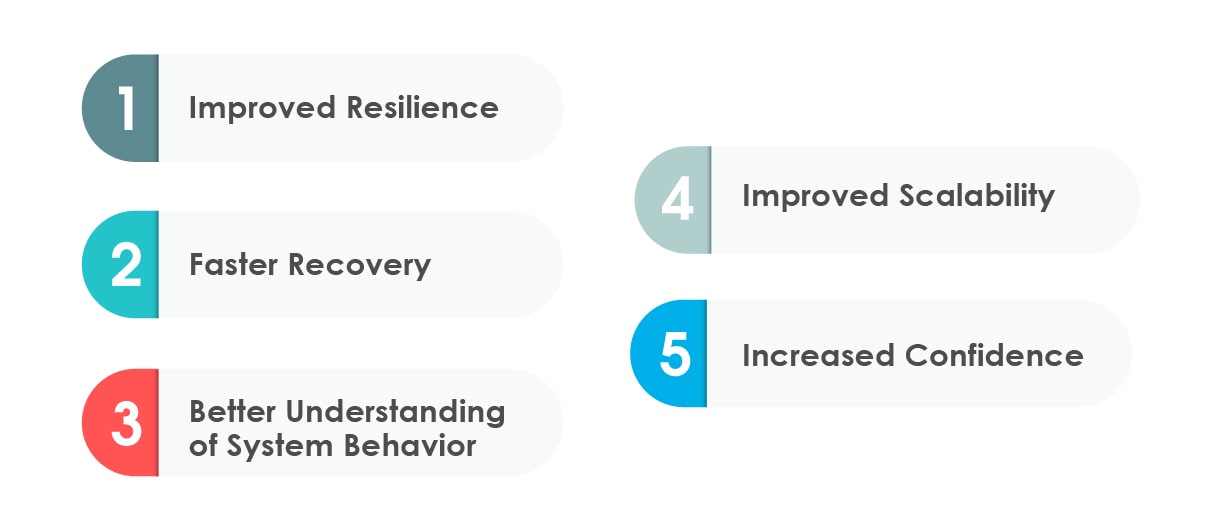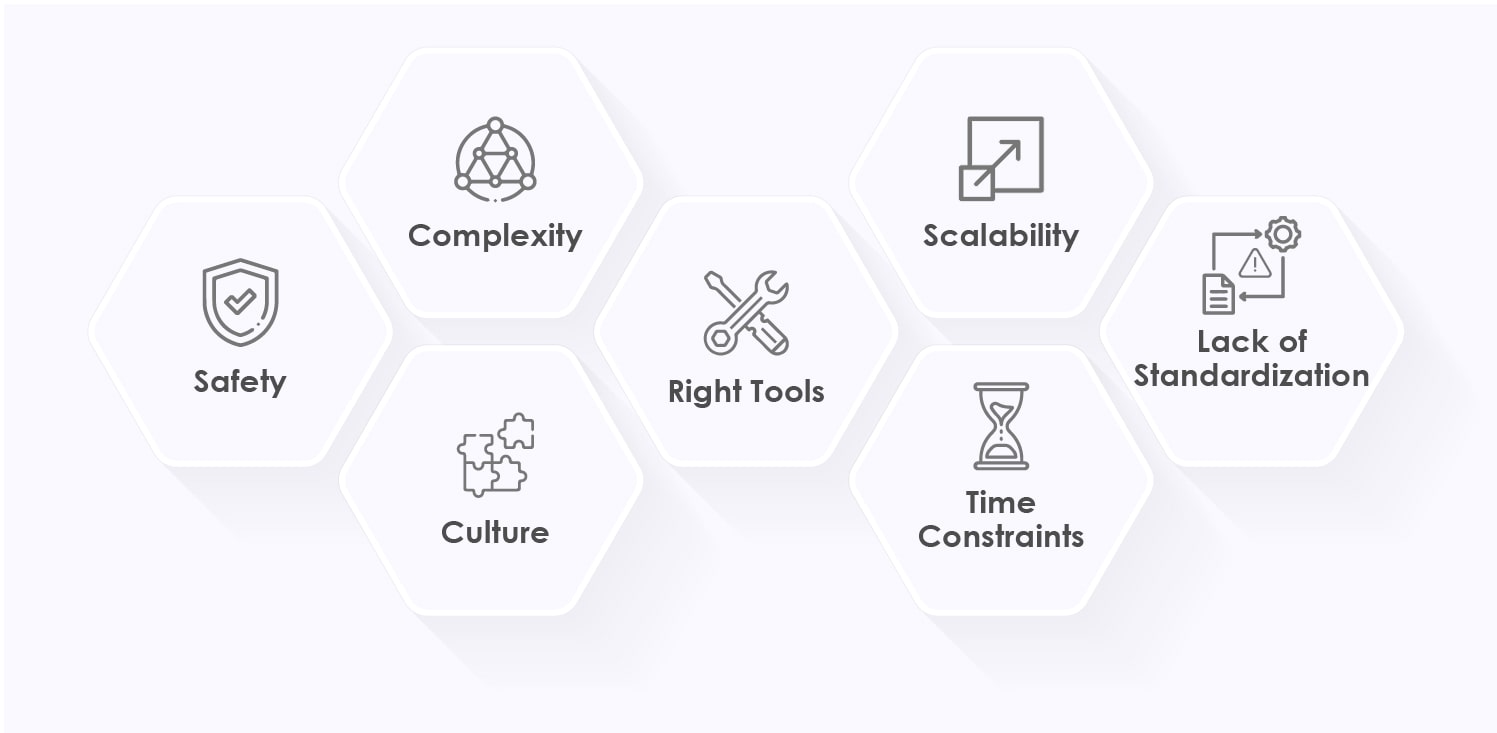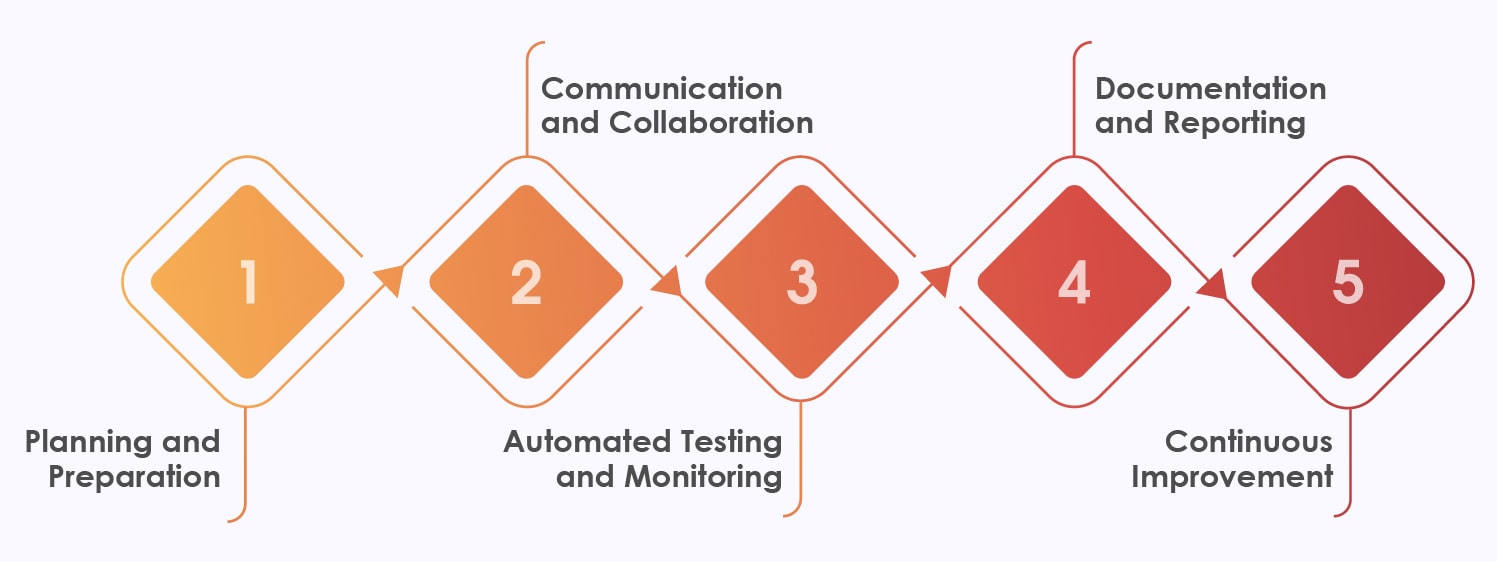Recommended Blogs
How Can Businesses Build Resilient Apps with Chaos Engineering?

- Chaos Engineering Explained
- Importance of Chaos Engineering
- Role of Chaos Engineering in Meeting DevOps Objectives
- Benefits of Chaos Engineering for Digital Businesses
- Key Challenges of Chaos Engineering
- Overcoming the Challenges of Performing Chaos Engineering
- Conclusion
- How TestingXperts Helps Businesses with Chaos Engineering?
Chaos Engineering Explained
Chaos engineering is the practice of intentionally introducing controlled chaos into a system in order to test and validate its resilience and fault tolerance. The goal of chaos engineering is to proactively identify potential failures in systems before they occur in real-world scenarios, thus improving the overall reliability and availability of the system.
Chaos engineering involves creating and conducting experiments to simulate failures in a controlled environment, such as network failures, system failures, or resource constraints. These experiments are designed to help engineers undeis one of the 5 larstand how the system behaves in the face of failures and identify any weaknesses or bottlenecks that need to be addressed.
Importance of Chaos Engineering
Chaos engineering is an essential practice for organizations that rely on distributed systems. It helps identify weaknesses in a system’s architecture and ensure that it can withstand unexpected events. By simulating “chaos” scenarios, chaos engineering allows organizations to test their systems and gain confidence in their ability to handle any situation. This practice helps digital businesses build resilient systems that are able to recover from disruptions and maintain availability quickly.
By testing the system with different inputs, chaos engineering helps identify areas of improvement or potential risks that may not have been previously considered. Chaos engineering also provides valuable insights into how a system behaves under different conditions. Additionally, it can provide visibility into how changes in the environment or system components affect the overall performance of a system.
Organizations are able to proactively prepare for outages by simulating various disaster scenarios and identifying potential points of failure. This practice also enables teams to understand their systems better and be prepared for any situation, providing them with the tools they need to respond more effectively when incidents occur.
Chaos engineering encourages collaboration between teams by providing visibility into how different parts of a system interact with one another and how they would respond in various situations. This practice helps create an environment where teams are empowered to take ownership of their projects while understanding how their work affects other components of the system.
Role of Chaos Engineering in Meeting DevOps Objectives

Chaos engineering helps digital businesses meet DevOps objectives by introducing a proactive approach to identify and mitigate potential problems in the production environment. This approach significantly differs from the traditional reactive approach, where issues are only fixed after they occur.
By injecting controlled chaos into the production environment, DevOps teams can simulate real-world scenarios and assess how well their systems respond to unexpected conditions. This helps identify potential problems and vulnerabilities, allowing DevOps teams to implement necessary changes to improve resilience and reliability.
Overall, Chaos engineering helps meet DevOps objectives by enabling organizations to:
Improve performance:
By regularly testing systems, DevOps teams can identify bottlenecks and other performance issues and make necessary changes to improve efficiency.
Ensure high availability and reliability:
By testing systems in controlled chaos, DevOps teams can assess how well systems respond to failures and make necessary changes to improve resiliency and ensure high availability and reliability of the system.
Increase collaboration:
By encouraging cross-functional teams to work together to identify and mitigate potential problems, DevOps teams can foster a culture of collaboration and improve teamwork.
Enhance security:
DevOps teams can identify security risks and implement necessary changes to improve security by testing systems for vulnerabilities and weaknesses.
Benefits of Chaos Engineering for Digital Businesses

Here are the key advantages of adopting chaos engineering for digital businesses:
Improved Resilience:
By simulating failures and outages, Chaos Engineering helps organizations identify and resolve weaknesses in their systems before they cause real harm. This leads to enhanced reliability and resilience, reducing the risk of outages and downtime.
Faster Recovery:
By regularly testing systems, organizations can quickly identify and fix potential issues before they become serious problems. This results in faster recovery times in the event of a real failure.
Better Understanding of System Behavior:
By performing controlled experiments, Chaos Engineering provides organizations with a deeper understanding of their systems and how they behave under different conditions. This information can be used to make better-informed decisions about system design and operation.
Improved Scalability:
By testing and improving the resiliency of systems, organizations can ensure that their systems are able to handle increased demand and scale smoothly as needed.
Increased Confidence:
By regularly testing and improving the reliability of systems, organizations can have increased confidence in their ability to handle outages and failures. This increased confidence can help organizations make more informed decisions about their technology investments.
Key Challenges of Chaos Engineering

While it can lead to significant benefits, it also presents a number of challenges, including:
Safety:
One of the main concerns with chaos engineering is ensuring the system’s safety and its users’ safety. It’s important to ensure that experiments are carefully planned and executed to minimize the risk of unintended consequences.
Complexity:
Systems are often highly complex, making it difficult to predict the results of a chaos experiment. This can make it difficult to determine the root cause of any failures and accurately assess the experiment’s impact on the system.
Culture:
The concept of intentionally causing chaos in a system can be a hard sell to stakeholders, particularly those who are responsible for maintaining stability and reliability. Building a culture of experimentation and risk-taking is essential to the success of a chaos engineering program.
Right Tools:
The tools used for chaos engineering can be challenging to implement and use, requiring a high degree of technical expertise.
Scalability:
As systems grow and become more complex, the challenges of performing chaos engineering also increase. It can be difficult to design experiments that scale to the size of a large-scale system and to interpret the results of those experiments in a meaningful way.
Time Constraints:
Chaos engineering experiments can be time-consuming and resource-intensive, requiring significant effort and planning to be executed effectively.
Lack of Standardization:
There is currently no standard methodology for performing chaos engineering, making it difficult to compare results between organizations and determine best practices.
Despite these challenges, many organizations are finding that the benefits of chaos engineering, including improved resiliency, reduced downtime, and faster incident response times, make it a valuable investment.
Overcoming the Challenges of Performing Chaos Engineering

Planning and Preparation:
Before performing any chaos experiments, planning and preparing for the process is important. This involves identifying potential areas of risk, defining objectives, and setting clear expectations for the outcome of the experiments.
Communication and Collaboration:
Good communication and collaboration between team members are key to overcoming challenges in chaos engineering. This includes working with stakeholders to educate them about the process, involving them in planning and preparation, and keeping them informed about the results of experiments.
Automated Testing and Monitoring:
Automated testing and monitoring tools can help to overcome some of the challenges of chaos engineering by reducing the time and effort required to perform experiments and by providing real-time feedback on system behavior.
Documentation and Reporting:
Keeping detailed records of experiments, their results, and any lessons learned is critical to overcoming challenges in chaos engineering. This includes documenting the steps taken during each experiment, any issues encountered, and how they were resolved.
Continuous Improvement:
Overcoming the challenges of chaos engineering requires a continuous cycle of improvement. This includes regularly reviewing and refining processes and tools, as well as incorporating feedback from team members to improve the overall effectiveness of the chaos engineering program.
By following these tips and practices, organizations can overcome the key challenges of performing chaos engineering and realize the benefits of this powerful technique for improving system resilience and reliability.
Conclusion
In conclusion, Chaos Engineering is a proactive approach to testing and improving the reliability and resilience of systems, and its importance lies in improving the overall health of the systems and reducing the risk of outages and downtime.
Chaos engineering is commonly used in software engineering. Still, it can also be applied to other systems, such as distributed systems, cloud computing systems, and infrastructure as a service (IaaS) systems. Overall, chaos engineering aims to help organizations build more reliable and resilient systems by testing and validating them before they are put into production.
How TestingXperts Helps Businesses with Chaos Engineering?
TestingXperts (Tx) is one of the Top 5 largest pure-play software testing services providers globally. Tx has been chosen as a trusted QA partner by Fortune clients and ensures superior testing outcomes for its global clientele. We have rich expertise in enabling end-to-end testing services for global clients across various industry domains like healthcare, telecom, BFSI, retail & eCommerce, etc.
With our domain knowledge and with over a decade of pure play testing experience, the company has been serving the global clientele with high-quality next-gen testing services to deliver superior solutions to clients.
TestingXperts believes that chaos engineering, when performed effectively, helps digital businesses achieve their product quality goals to their full potential. Our team of experts provides comprehensive services to help businesses implement chaos engineering and achieve better resilience, reliability, and performance.
Our Services Include:
Strategy Development:
Our team will work with you to develop a chaos engineering strategy tailored to your specific needs. We will help you understand the goals of chaos engineering, the key principles involved, and the best approach to implementing it in your organization.
Identify and implement right tool set:
Our experienced team helps you identify the best possible tools according to your custom business requirements.
Implementation and Training:
We will provide expert guidance and support to help you implement chaos engineering in your organization. Our team will train your staff on how to perform chaos experiments, interpret the results, and use the insights to improve the resilience of your systems.
Chaos Engineering Consultation:
Our team of experts is available to provide consultation on any aspect of chaos engineering. We can help you identify potential areas for improvement, recommend best practices, and provide guidance on resolving any challenges you may encounter.
Managed Chaos Engineering:
We can manage the entire process if you prefer to outsource your chaos engineering needs. This includes planning and executing chaos experiments, analyzing the results, and providing recommendations for improvement.
Tx’s Chaos Engineering Differentiators
• Quicker experimentation with controlled risk
• Measure results in real-time
• Minimize downtime
• Identify areas of improvement
• Classify system bottlenecks and achieve minimum business disruptions due to failure of complex and distributed systems
• Ensure seamless working of interdependencies in complex systems
• Enable contingency plans to respond to system outages
• Ensure business continuity even after system failure by resuming systems to operational states without any impact on end users
Discover more
